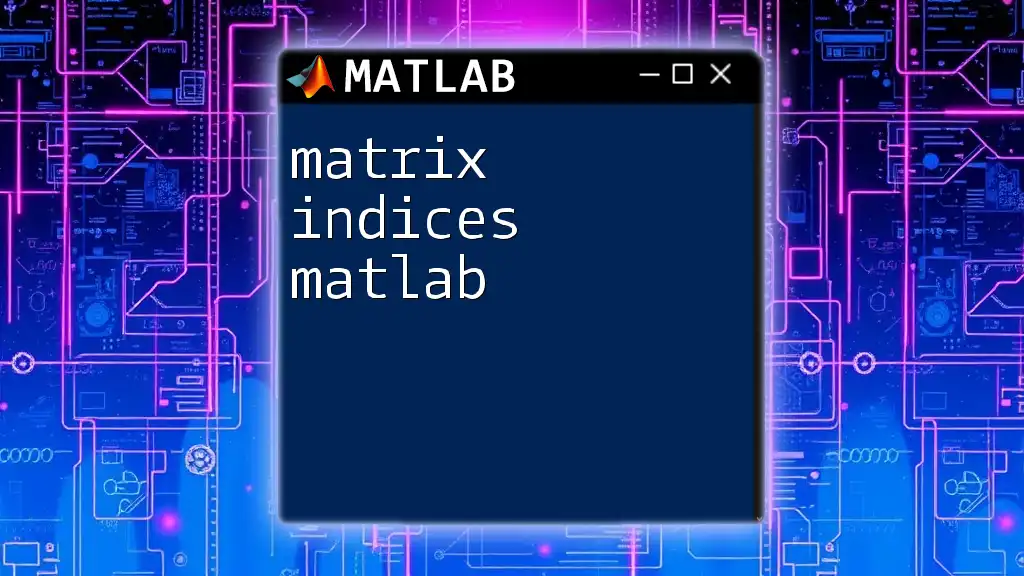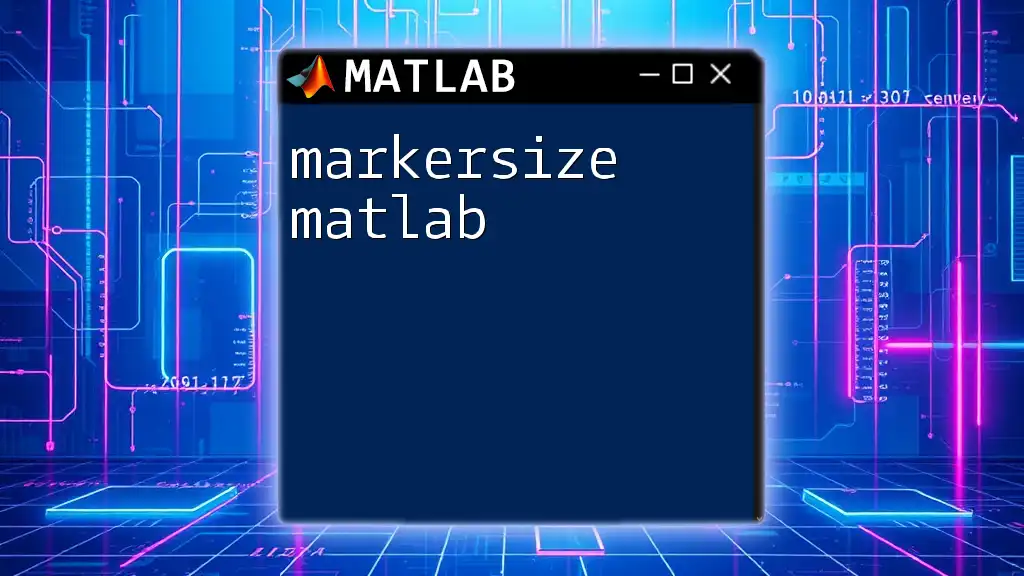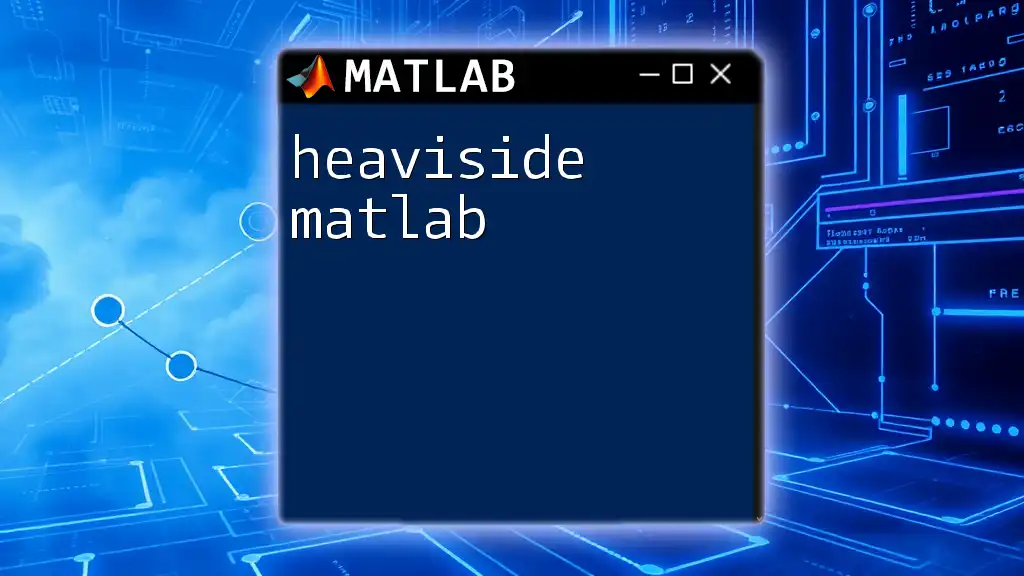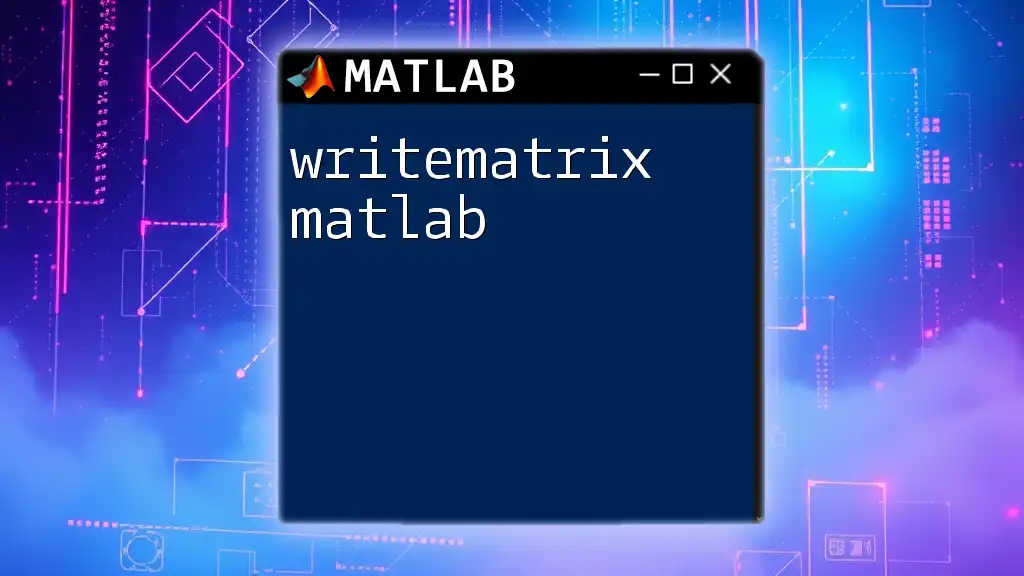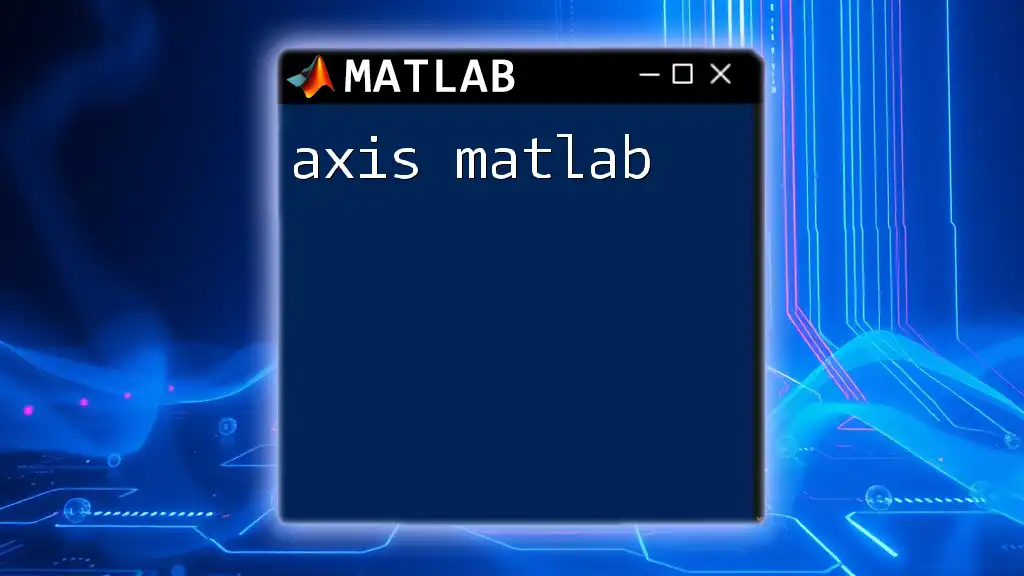In MATLAB, matrix indices allow you to access and manipulate specific elements or submatrices within a matrix using their row and column positions.
A = [1, 2, 3; 4, 5, 6; 7, 8, 9]; % Create a 3x3 matrix
element = A(2, 3); % Access the element in the 2nd row, 3rd column (value is 6)
submatrix = A(1:2, 1:2); % Extract a 2x2 submatrix from the top-left corner
Understanding Matrices in MATLAB
What is a Matrix?
In mathematics, a matrix is a rectangular array of numbers organized in rows and columns. In MATLAB, a matrix serves as the fundamental data structure, enabling manipulation and analysis of numerical data efficiently. Understanding matrix indices is essential to leverage the full potential of matrices in MATLAB, allowing you to access, modify, and analyze data seamlessly.
Creating Matrices in MATLAB
There are multiple ways to create matrices in MATLAB, which serve as the foundation for your matrix operations. One of the simplest methods is using square brackets.
To create a 3x3 matrix, you can use the following code:
A = [1 2 3; 4 5 6; 7 8 9]; % Creates a 3x3 matrix
Another option is to use the `reshape` function, which allows you to create matrices of specific sizes from a linear array.

Basics of Matrix Indices
What are Matrix Indices?
Matrix indices specify the position of elements in a matrix, enabling you to access, modify, and manipulate data efficiently. The concept of indexing is crucial because it allows you to interact directly with the data contained within a matrix without needing to iterate through the entire structure.
Indexing Types in MATLAB
There are two primary types of indexing in MATLAB:
-
Linear Indexing: MATLAB allows you to access matrix elements in a linear fashion. The elements are indexed sequentially, starting from the first element. For a matrix `A`, the linear index can be calculated using the formula:
- Index = (Row - 1) * Number_of_Columns + Column.
-
Row and Column Indexing: In this method, you explicitly specify the row and column numbers. This is the most commonly used form of indexing in MATLAB.

Accessing Elements in a Matrix
Accessing Single Elements
To access a single element in a matrix, you use the row and column indices. For instance, to get the element located at row 2, column 3, you would write:
element = A(2, 3); % Accesses the element at row 2, column 3
Accessing Multiple Elements
MATLAB allows you to access multiple elements by specifying ranges in indices. For example, to create a sub-matrix from the original matrix `A`, you can use the following command:
subMatrix = A(1:2, 2:3); % Accesses a sub-matrix
This command selects the first two rows and the second and third columns, yielding a smaller matrix.
Using Logical Indexing
One of the powerful features of MATLAB is logical indexing, which allows you to filter elements based on specific conditions. For example, to extract elements greater than 5 from matrix `A`, you could use:
index = A > 5; % Creates a logical index for elements greater than 5
values = A(index); % Extracts the values meeting the condition
This results in an array containing only those elements that meet the defined criterion.
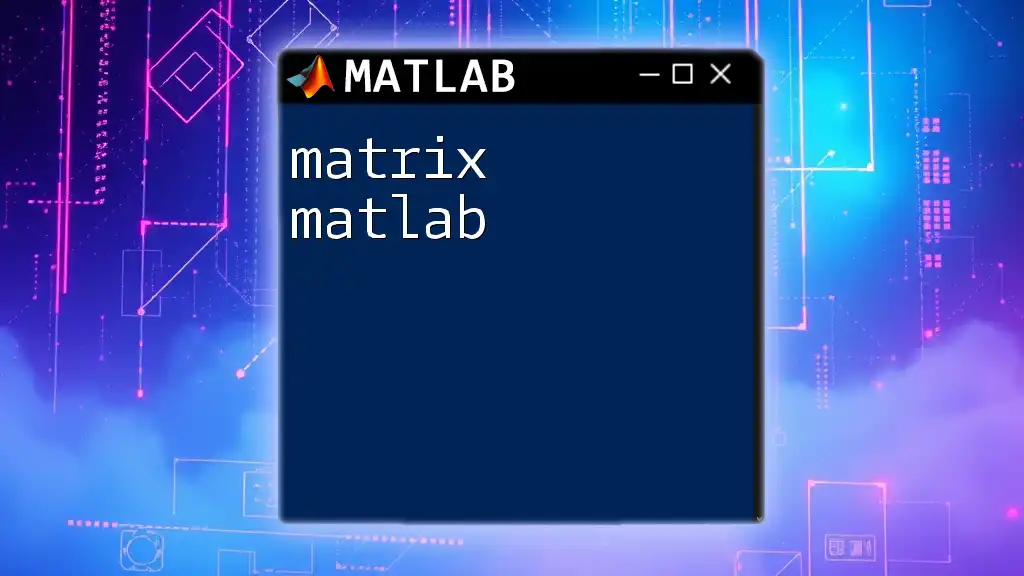
Advanced Indexing Techniques
Colon Operator
The colon operator (:) is a versatile tool in MATLAB that allows for easy slicing of matrices. It can be used to extract entire rows or columns efficiently. For example, to extract the entire second column of matrix `A`, you can do:
B = A(:, 2); % Extracts the entire second column
End Keyword
The `end` keyword in MATLAB is useful for referencing the last element in a matrix dynamically. For example, to access the last row of the matrix `A`, you can use:
lastRow = A(end, :); % Accesses the last row of matrix A
Combining Indices
MATLAB allows you to combine different indexing techniques to fine-tune your data selection. For instance, you can access specific rows and columns simultaneously:
selectedElements = A(1:2, [1 3]); % Accesses specific rows and columns
This flexibility is especially beneficial when dealing with complex datasets.

Modifying Elements using Indices
Changing Values
Modifying values in a matrix is straightforward and accomplished using indices. If you want to change the value at (1,1) to 10, you would write:
A(1, 1) = 10; % Changes the element at (1,1) to 10
Adding or Removing Rows/Columns
You can also manipulate matrix dimensions by adding or removing rows and columns based on indices. For example, to remove the third column of matrix `A`, you can simply use:
A(:, 3) = []; % Removes the third column
This command efficiently reduces the matrix without the need for complex reshaping functions.

Practical Applications
Use Cases in Data Analysis
Understanding matrix indices is crucial when working with data analysis and machine learning. For instance, during exploratory data analysis, you often need to filter out certain data points based on specific conditions or extract subsets of data for model training.
Real-World MATLAB Example
Consider a scenario where you have a dataset captured in a matrix and you want to perform statistical analysis on a specific subset of that data. By mastering matrix indices, you can quickly query the data, perform computations, and extract meaningful insights that facilitate better decision-making.
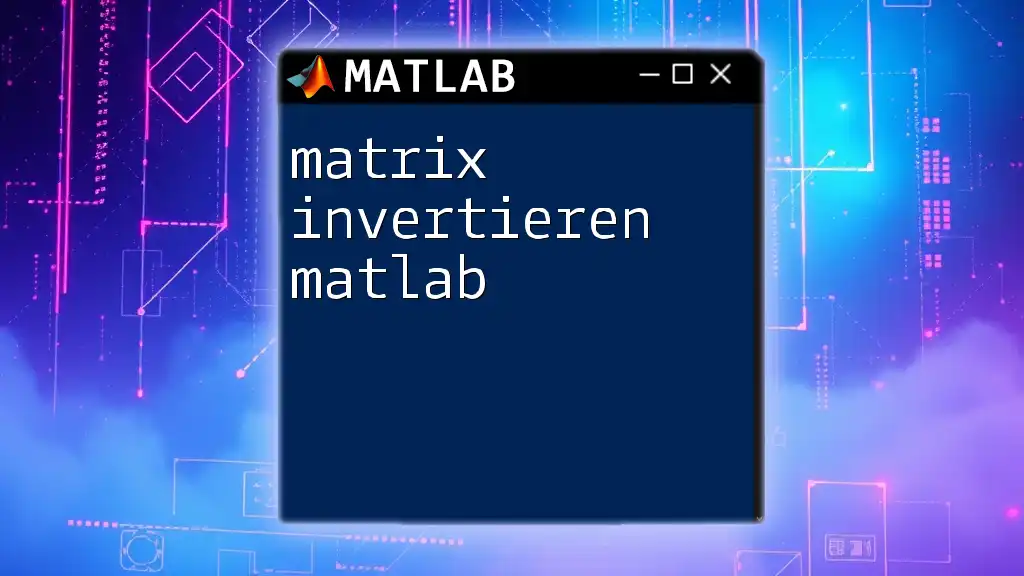
Troubleshooting Common Indexing Issues
Indexing Errors
While working with matrix indices in MATLAB, you may encounter common indexing errors, such as "Index exceeds matrix dimensions." This typically happens when you try to access an element that doesn't exist in the matrix. For example, attempting to access element (4,1) in a 3x3 matrix would generate this error.
Debugging Tips
To troubleshoot indexing issues, start by checking the size of the matrix using:
size(A); % Returns the dimensions of matrix A
Understanding your matrix dimensions enables you to avoid indexing errors and facilitates easier debugging.

Conclusion
In conclusion, mastering matrix indices in MATLAB is vital for anyone serious about learning MATLAB programming and data manipulation. Through effective indexing, you can enhance your ability to interact with data, streamline your analysis processes, and unlock greater insights.
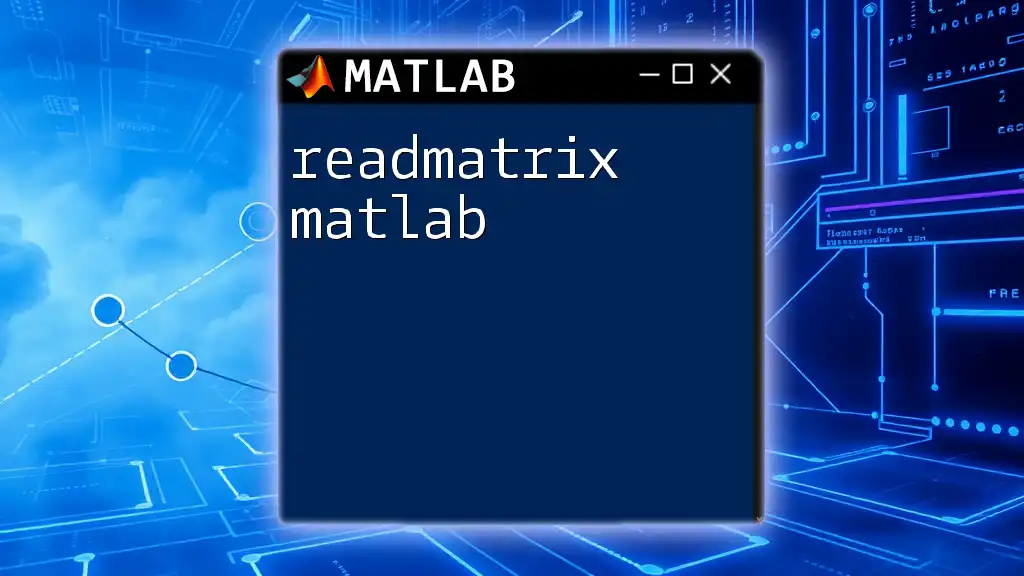
Additional Resources
For further exploration, you can refer to the official MATLAB documentation, which offers comprehensive tutorials and examples. Additionally, consider joining community forums where you can discuss and gain insights from other MATLAB users.

Call to Action
If you enjoyed this article and want to learn more about MATLAB commands and techniques, consider subscribing to our updates or joining our community for continuous learning and support!

